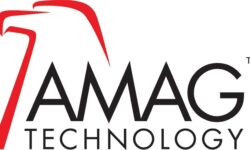The Cloud’s the Limit. Now What?
Integrators are merging advanced video surveillance systems with access control, IoT sensors, and analytics into cloud-based platforms.

Adobe Stock image by kwanchai.
In the last year, the security industry has witnessed a significant shift towards the increased adoption of technological innovation.
As an integrator, you are at the center of this transformation, merging advanced video surveillance systems with access control, IoT sensors, and analytics into comprehensive, cloud-based platforms. These platforms cater to the evolving needs of modern end users, enhancing their security experience and supporting the integration of previously disparate systems.
One main appeal of cloud solutions lies in their simplicity and scalability, which makes them highly attractive to customers with ever-changing business and security requirements. This shift has led to more customers embracing cloud technologies, which in turn has prompted you, as integrators, to expand your range of services.
You are now recognizing the potential of networked solutions to enhance user experiences and open new doors for revenue.
Triple Threat: AI, Analytics and Cybersecurity
In today’s landscape, it is crucial for you to align your business model and strategies with the ever-changing market demands. There is an increasing focus on emerging technologies such as artificial intelligence (AI), including natural language processing (NLP), and edge computing, with cybersecurity emerging as a key consideration in purchasing decisions.
The advancements in AI and analytics are creating new opportunities for you to provide actionable insights and intelligent solutions to your customers. Especially in light of the fact that the effectiveness of AI in real-world security applications has now been proven to enhance both security efforts and operational efficiencies.
Your role in this evolving landscape is pivotal. You are tasked with understanding how AI technologies can be integrated into existing systems and finding practical applications with the latest developments in analytics.
By evaluating emerging AI solutions, you can guide your clients in making informed decisions, taking into account factors such as scalability, interoperability, and the overall impact on existing security protocols.
Cloud Rising: Simplicity, Scale, Flexibility
As we all know, the pandemic led to a surge in demand for cloud infrastructure and software solutions, influencing the options for VSaaS offerings. Solutions that offer ease of management and user-friendly experiences became more valuable, particularly in small to medium-sized business environments where IT resources were limited.
The simplicity and intuitiveness of these cloud services, comparable to smartphone apps, are ideal for businesses without extensive technical expertise.
Scalability is a key feature of VSaaS solutions because it enables seamless integration with other connected devices and systems, like access control. You must deploy services that allow for the enhancement of cameras with analytics without the need for additional maintenance, licensing, or hardware — that’s the future of customer requirements.
Providing flexible migration options, such as hybrid models, is essential. These models offer a balance between cloud and on-premises infrastructures, especially important in cases where regulatory and data security concerns call for local data storage.
Edge computing is also impacting your approach to system integration, improving bandwidth efficiency and data processing speeds, crucial for integrating cloud security systems with various business platforms.
Integrators as Architects of Cloud Security
Integrators like you focused on future-proofing their business are increasingly moving towards cloud-centric solutions because of its inherent scalability and affordability. This shift requires a cultural change with a focus on long-term customer relationships and continuous service.
Transitioning from revenue generated from large, on-premises installations to a model based on recurring monthly revenue can be challenging. However, the consistent revenue stream from cloud services and options like remote video monitoring positions your business to capitalize on the opportunities presented by emerging technologies.
This evolution towards a service-centric business model is a strategic move, preparing your business for the next phase of growth and embracing the potential of emerging tech. It sets the stage for a more resilient, adaptable, and forward-looking business.
As integrators, your role extends beyond merely providing technological solutions. You are leading the way into a future where security and efficiency intersect through cloud computing advancements. This path offers unprecedented opportunities for innovation, resulting in enhanced security measures and smarter ways of protecting assets.
You are the architects of this evolution, shaping the future of security and surveillance. By embracing this role, you secure a valuable future for your business, characterized by long-term partnerships and solutions that exceed expectations.
The decisions and strategies you implement today will shape the security landscape of tomorrow and solidify your place in it. The future of security, influenced by your actions, will impact not just the future of your business but also the safety and efficiency of the environments you help protect.
Steve Prodger is the chief revenue officer at Arcules.
If you enjoyed this article and want to receive more valuable industry content like this, click here to sign up for our FREE digital newsletters!

Security Is Our Business, Too
For professionals who recommend, buy and install all types of electronic security equipment, a free subscription to Commercial Integrator + Security Sales & Integration is like having a consultant on call. You’ll find an ideal balance of technology and business coverage, with installation tips and techniques for products and updates on how to add to your bottom line.
A FREE subscription to the top resource for security and integration industry will prove to be invaluable.








I totally agree with your article, and now the biggest challenge is on how to secure those controllers or microcontroller connected to the internet, since they are the most vulnerable component of the security system. We are witnessing those other systems like the grid, water systems and other use the same subsystems; and they are already being attacked. Manufacturers needs to address these issues in their control systems as soon as possible, or else we are going to see many security systems taken over by hackers.